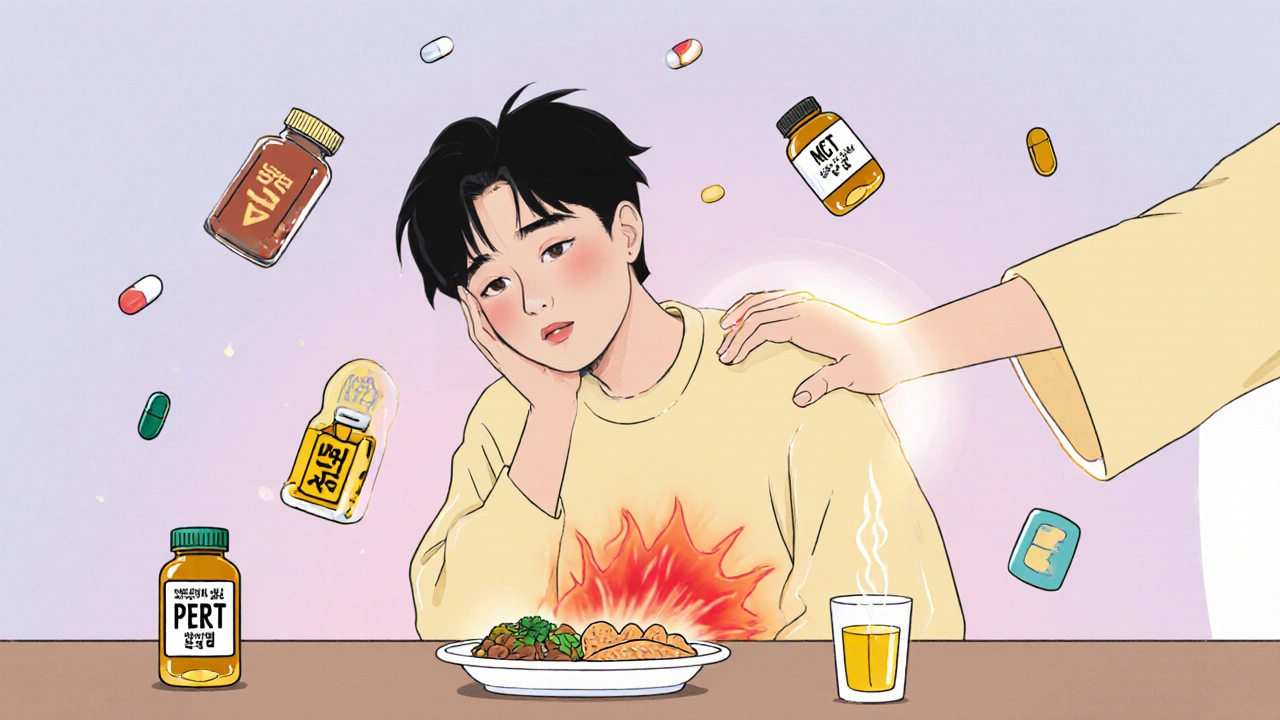When you have chronic pancreatitis, a long-term inflammation of the pancreas that damages its ability to digest food and regulate blood sugar. It's not just about pain—it's about how your body handles food every single day. The chronic pancreatitis diet isn't a quick fix. It's your daily tool to reduce flare-ups, prevent malnutrition, and keep your pancreas working as well as it can.
At its core, this diet is built around one rule: low fat. High-fat meals force your pancreas to work overtime, releasing enzymes it can't safely manage. That’s when pain hits, nausea follows, and digestion falls apart. Instead, focus on lean proteins like skinless chicken, tofu, and fish. Choose whole grains over white bread. Swap butter for olive oil—just a teaspoon at a time. Even healthy fats can trigger symptoms if you overdo it. You’ll also need to avoid alcohol completely. No exceptions. Alcohol doesn’t just worsen inflammation—it speeds up permanent damage.
Many people with chronic pancreatitis also develop pancreatic insufficiency, a condition where the pancreas can’t produce enough digestive enzymes. That’s why enzyme replacement therapy, prescription pills taken with every meal to help break down food—often paired with diet changes—can be life-changing. Without them, you might lose weight even when eating enough. And because your body struggles to absorb vitamins, especially A, D, E, and K, your doctor may recommend supplements. This isn’t optional. It’s maintenance.
Some people think they need to eat small meals all day. That’s true for many. Six small meals can be easier on your system than three big ones. But timing matters too. Eating slowly, chewing well, and avoiding large drinks with meals helps your body process food without overloading the pancreas. And while fruits and vegetables are usually safe, steer clear of fried versions or heavy sauces. Steamed, boiled, or raw is best.
You might also notice changes in your stools—greasy, foul-smelling, or floating. That’s a sign your body isn’t absorbing fat properly. It’s not just embarrassing—it’s a warning. Tracking what you eat and how you feel can help you spot triggers. Some people react to spicy food. Others to caffeine or carbonated drinks. There’s no universal list, but keeping a simple food journal for a few weeks can reveal your personal patterns.
This isn’t about perfection. It’s about progress. You won’t always get it right. But each time you choose a grilled chicken salad over fried chicken, each time you take your enzymes before eating, each time you skip the beer—you’re giving your pancreas a break. And over time, those small choices add up to fewer hospital visits, more energy, and better control over your life.
Below, you’ll find real-world guides and comparisons from people who’ve walked this path—whether it’s understanding enzyme brands, comparing low-fat meal plans, or learning how to handle nutrient gaps without guesswork. These aren’t theories. They’re tested strategies from those living with it every day.

Chronic pancreatitis causes persistent pain, digestion issues, and nutrient loss. Learn how enzyme therapy, targeted nutrition, and pain management strategies can improve daily life-even when there's no cure.
View more